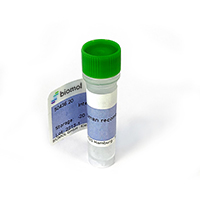Cookie preferences
This website uses cookies, which are necessary for the technical operation of the website and are always set. Other cookies, which increase the comfort when using this website, are used for direct advertising or to facilitate interaction with other websites and social networks, are only set with your consent.
Configuration
Technically required
These cookies are necessary for the basic functions of the shop.
"Allow all cookies" cookie
"Decline all cookies" cookie
CSRF token
Cookie preferences
Currency change
Customer-specific caching
FACT-Finder tracking
Individual prices
Selected shop
Session
Comfort functions
These cookies are used to make the shopping experience even more appealing, for example for the recognition of the visitor.
Note
Show the facebook fanpage in the right blod sidebar
Statistics & Tracking
Affiliate program
Conversion and usertracking via Google Tag Manager
Track device being used

| Item number | Size | Datasheet | Manual | SDS | Delivery time | Quantity | Price |
|---|---|---|---|---|---|---|---|
| R1075-10U.10 | 10 µg | - | - |
3 - 19 business days* |
871.00€
|
If you have any questions, please use our Contact Form.
You can also order by e-mail: info@biomol.com
Larger quantity required? Request bulk
You can also order by e-mail: info@biomol.com
Larger quantity required? Request bulk
RANK L, is a 39-45kD type II transmembrane (TM) protein in the tumor necrosis factor family,... more
Product information "RANKL, aa85-245, Recombinant, Human (Receptor Activator of Nuclear Factor kappa B Ligand, Receptor A"
RANK L, is a 39-45kD type II transmembrane (TM) protein in the tumor necrosis factor family, designated TNFSF11 (1-5). RANK L, produced by osteoblasts and bone marrow stromal cells, is required for differentiation of osteoclasts and stimulates bone resorption (4, 6). It is also produced by activated T cells and augments dendritic cell stimulation, RANK L-/- mice lack lymph nodes and have impaired thymocyte development (1-3, 6). The human RANK L cDNA encodes 317aa, including a 47aa cytoplasmic domain, a 21aa TM region, and a 249aa extracellular domain (ECD) with two potential N-linked glycosylation sites (note: aa85-245 of Accession # AAC51762 is identical to aa157-317 of SwissProt # O14788. This aa range contains the ECD trimerization and receptor-binding motifs, but not ECD proteolytic cleavage sites). Within the ECD, human RANK L shares 89%, 89%, 93% and 95% aa identity with mouse, rat, bovine and porcine RANK L, respectively. Mouse RANK L can stimulate human osteoclast differentiation (4). Like most TNF family members, RANK L can form trimers (1). Soluble 31, 25 and 24kD forms of RANK L can be created by usage of alternate start sites at aa74 or 146, or proteolytic cleavage by osteoblast- or stromal cell-derived ADAM10 (after aa139) or MMP14 (146aa), or bone metastatic prostate tumor-derived MT1-MMP (aa146) (5, 7, 8). Both TM and soluble extracellular RANK L act by engaging RANK receptors and are antagonized by the decoy receptor, OPG (osteoprotegrin) (2, 5). In resting cells, the majority of RANK L is stored in secretory lysosomes (9). In mammary epithelia, RANK L is upregulated by pregnancy hormones and is essential for the formation of a lactating mammary gland (10). In the brain, astrocyte RANK L mediates body temperature regulation (11). Pathologically, RANK L is thought to mediate post-menopausal osteoporosis, vascular calcification, progestin-induced breast cancer, cancer-induced bone disease, and osteopetrosis (in RANK L deficiencies) (12-16). Source: Recombinant corresponding to aa85-245 from human RANK L with an N-terminal Met expressed in E. coli. Molecular Weight: ~18.3kD, Endotoxin Level: <1EU/1ug (LAL), Biological Activity: Measured by its ability to induce osteoclast differentiation on RAW 264.7 mouse macrophages., The ED50 for this effect is typically 2-12ng/mL, Storage and Stability: Lyophilized powder may be stored at -20°C. Stable for 12 months at -20°C. Reconstitute with PBS. Aliquot to avoid repeated freezing and thawing. Store at -20°C. Reconstituted product is stable for 6 months at -20°C. For maximum recovery of product, centrifuge the original vial after thawing and prior to removing the cap. Further dilutions can be made in assay buffer.
| Keywords: | OPGL, TNFSF11 |
| Supplier: | United States Biological |
| Supplier-Nr: | R1075-10U |
Properties
| Conjugate: | No |
| Species reactivity: | human |
| Format: | Purified |
Database Information
| KEGG ID : | K05473 | Matching products |
| UniProt ID : | O14788 | Matching products |
| Gene ID | GeneID 8600 | Matching products |
Handling & Safety
| Storage: | -20°C |
| Shipping: | +4°C (International: +4°C) |
Caution
Our products are for laboratory research use only: Not for administration to humans!
Our products are for laboratory research use only: Not for administration to humans!
Information about the product reference will follow.
more
You will get a certificate here
Viewed




